Grinding degree of hand-brewed coffee beans standard unit weight scale amount of coffee powder per person of hand-brewed coffee beans
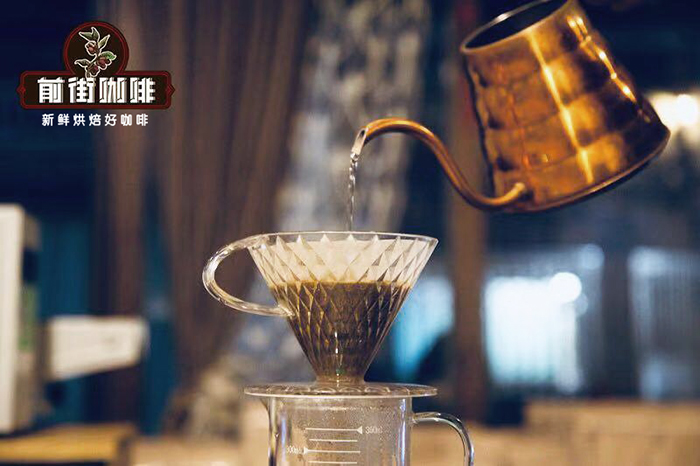
Professional coffee knowledge exchange more coffee bean information please follow the coffee workshop (Wechat official account cafe_style)
Beginners of hand-brewed coffee often come to Qianjie Cafe to ask how to determine the grinding degree of each coffee bean, what effect it has on coffee extraction, how to distinguish the thickness of coffee powder at home, and so on. In front of this article, let's talk about the grinding degree of hand-brewed coffee.
Effect of Grinding degree on Coffee
Grinding is very important for coffee, and the size of coffee particles directly affects the efficiency of hot water extraction of coffee. In theory, the more uniform the coffee particle value is, the more consistent the overall extraction efficiency is, and the better the coffee flavor is. The concentration and extraction rate decrease with the thickening of the grinding degree and increase with the finer the grinding degree. The degree of grinding means not only the size and shape of the coffee after grinding, but also the size of the surface area. The finer the coffee powder is ground, the larger the coffee surface area is, and the more the water touches the coffee, the more substances can be extracted. An increase in the surface area (the thicker the grinding) also allows more carbon dioxide emissions in the coffee beans.
Effects of roasting on aroma and carbon dioxide production of coffee beans
Roasting gives full play to the aroma of coffee. Mena reaction refers to a series of degradation and polymerization of monosaccharide carbohydrates and amino acids, which runs through the whole roasting process. Monosaccharides react with amino acids at different temperatures to produce many complex aromas, such as nuts, almonds, cream, chocolate and other aromas from the Mena reaction. Caramelization is the oxidation and browning of sugars in the process of heating, resulting in aromas such as honey, maple syrup and caramel. To put it simply, the longer the baking time, the more sour coffee beans will play. In the case of medium roasting, lightly roasted coffee has more sour flavors such as citrus and berries. Deep-baked caramelized flavor will be more obvious, such as cocoa, caramel, nuts and other flavors.
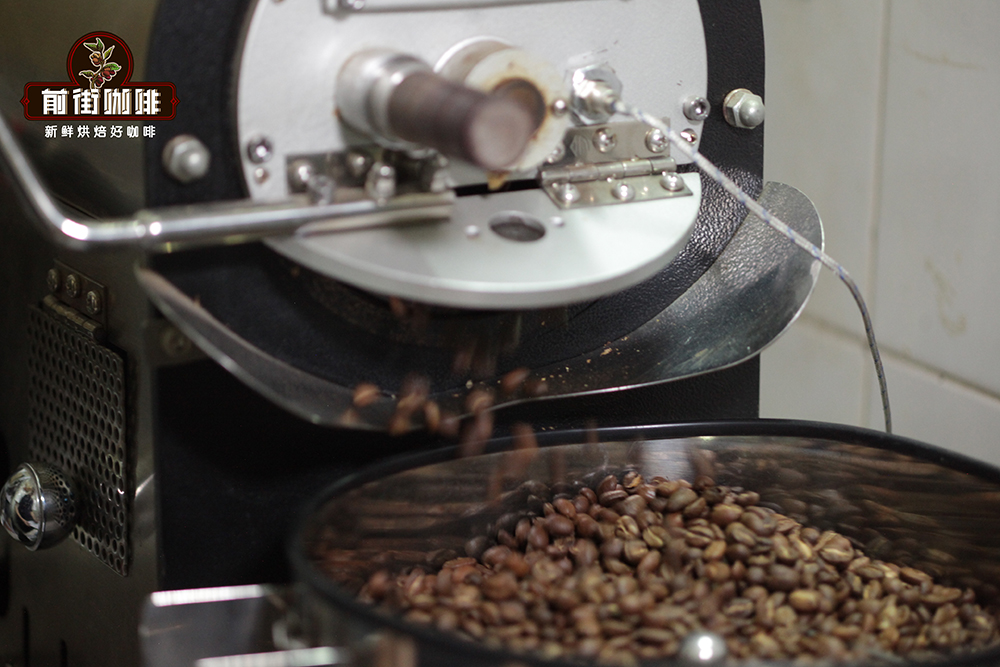
Roasting not only produces aroma of coffee beans, but also produces carbon dioxide in the body of coffee beans. The deeper the roasting degree is, the more carbon dioxide is produced. Therefore, in order to ensure that carbon dioxide can be better released during brewing, Qianjie suggests that when buying freshly roasted coffee beans, raise beans to allow coffee beans to release carbon dioxide by themselves through the exhaust valve on the package without opening the original package. It is helpful to the fusion of aromatic substances and oil, so that all the aromatic substances inside the coffee beans can be easily extracted. For light roasted beans in Qianjie coffee, it is recommended that the cultivation time is 3-4 days from the beginning of the baking date, and 5-6 days from the beginning of the baking date for medium-to-deep roasted beans.
How to determine the grindability of coffee beans?
Take the freshly roasted beans of Qianjie Coffee as an example, the hand-made coffee beans are divided into medium-light roasting and medium-deep roasting.
Light roasted coffee beans in Qianjie coffee: light roasted coffee beans will show sour taste, and caramelized substances are not easy to extract from cups. Qianjie Association recommends medium fine grinding (0.85mm 's No. 20 sieve pass rate of 80%, that is, the size of fine sugar). Medium fine grinding can slow down the time of water passing through the powder layer, and better extract the sour and sweet substances in coffee. And caramelized substances balance the flavor of coffee. Medium and fine ground coffee powder is recommended to brew at 90-91 °C. too high water temperature will extract caramelized substances too high, resulting in bitterness, while too low water temperature will lead to insufficient extraction, and only some sour and sweet substances will be extracted, making the coffee flavor insipid and boring.
Deeply roasted beans in front street coffee:
Medium-and deep-roasted coffee beans generally have a low sour taste and obvious alcohol thickness, which means that caramel-flavored substances will be more abundant. Qianjie will recommend the use of medium coarse grinding (the pass rate of 0.85mm 's No. 20 screen is 70%, that is, the size of coarse sugar). Medium coarse grinding can speed up the time for water to pass through the powder layer, so that the caramelized substance will not be excessively extracted, and the coffee flavor and taste will be sweet and mellow without producing unpleasant bitterness. Medium and coarse ground coffee powder is recommended to brew at 88-89 °C. if the water temperature is too high, the flavor of the coffee will be bitter and difficult to swallow, and the flavor of the coffee will be dull and insipid.
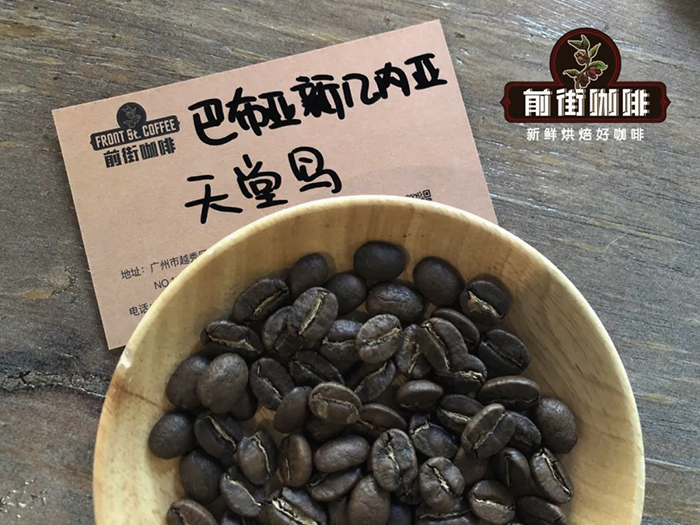
How to use 0.85mm 's No. 20 screen?
With regard to the degree of grinding, Qianjie is determined by screening this method, according to the grinding advice provided by the American Fine Coffee Association SCA for hand-brewed coffee, Qianjie is combined with the actual operation verification. If you don't have a sieve at home, Qianjie Coffee suggests observing the speed of the water to judge that if the flow is too fast, it is coarse, and if the flow is too slow, it is fine.
First of all, prepare 10g coffee beans for grinding, initially determine a grinding degree according to the size of fine sugar and coarse sugar, then pour into the sieve, cover the lid, shake left and right, so that the coffee powder falls into the powder plate below through the sieve. No coffee powder is sifted until it passes through the sieve. Then prepare an electronic scale and container to zero, pour the screened coffee powder into the container and weigh it. If the screened coffee powder reaches 8g ±01, it is medium-fine grinding, and if the screened coffee powder reaches 7g ±01, it is medium-coarse grinding. If the pass rate is too much, adjust the grinding degree; if the pass rate is too low, the grinding degree will be fine.
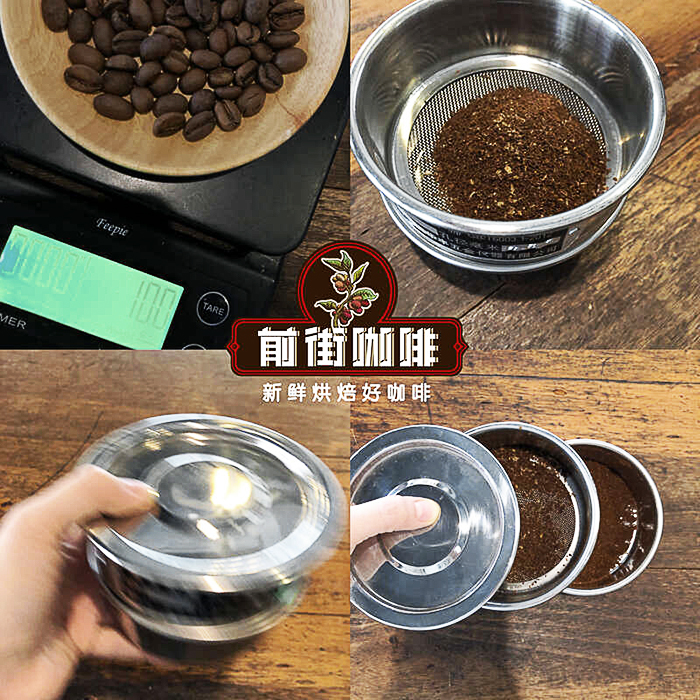
The importance of uniform grinding degree
The powder should be uniform after grinding. Coffee beans become powdered after grinding, and the distribution of powder size has a lot to do with the quality of coffee drinks. The more the size of the powder is concentrated within the target range, the better the flavor will be. If there are too many coarse grains, you will not be able to brew the good taste hidden inside the coffee; if there are too many fine grains, you will make coffee that tastes too miscellaneous and too bitter. If the uneven grinding is more serious, Qianjie suggests changing to a grinding appliance.

Several important factors affecting coffee extraction or flavor are water temperature, grinding, ratio of powder to water, etc., in which the grinding degree determines the size and uniformity of coffee powder particles, which directly affects the efficiency of water flow extraction of coffee powder flavor substances. In this article, Qianjie will discuss the impact of coffee grindness on a cup of coffee and share the data of internal calibration grindness.
The finer the coffee is ground, the easier it is to accumulate coffee powder on the filter paper, and the extraction resistance is greater, so the flow rate is slower and the extraction time is longer. The extraction rate of the substances contained in coffee is high, and the coffee brewed is strong.
Similarly, the coarser the coffee is ground, the larger the gap in the powder layer is, the less coffee powder is in contact with hot water, the weaker extraction resistance, the faster coffee dripping speed and the lower extraction rate, so the coffee flavor is lighter.
So simply changing the degree of grinding can make a big difference in the taste of coffee, which is why coffee grinding is so important.
We might as well take the degree of grinding as a variable to brew coffee, respectively, three groups of coffee with fine grinding, medium grinding and thicker grinding, while the brewing coffee chooses Honduran litchi orchid coffee beans. After brewing, the coffee concentration was measured and the extraction rate was calculated to verify the above argument.
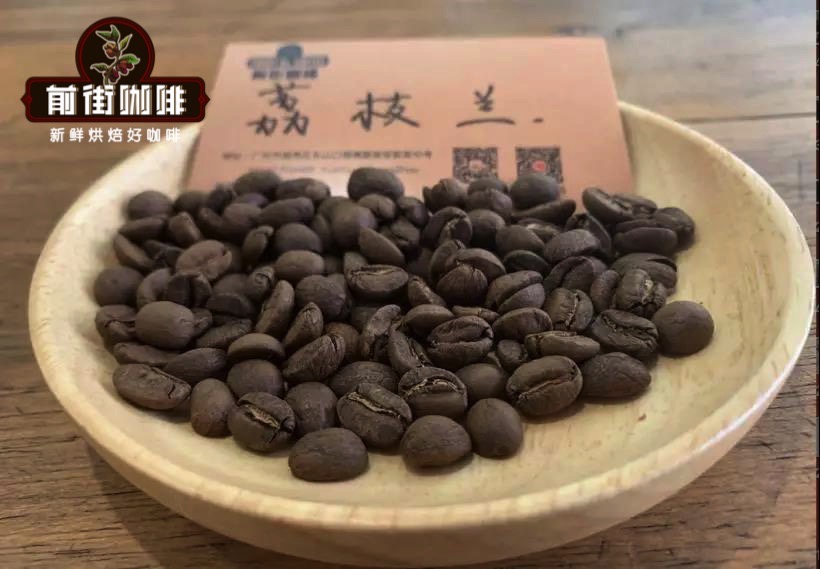
Cooking scheme
Coffee powder: 15g
Ratio of cooking: 1:16
Boiling water temperature: 90 degrees Celsius
Cooking process
Segmented extraction is used in the front street, the amount of steaming water is twice that of coffee powder, that is, 30 grams of water is steamed for 30 seconds, the small flow is injected around to 150 grams, and the water level is about to be exposed when the powder bed is about to be exposed, continue to inject water to 240 grams to stop, the whole extraction time is 2 minutes.
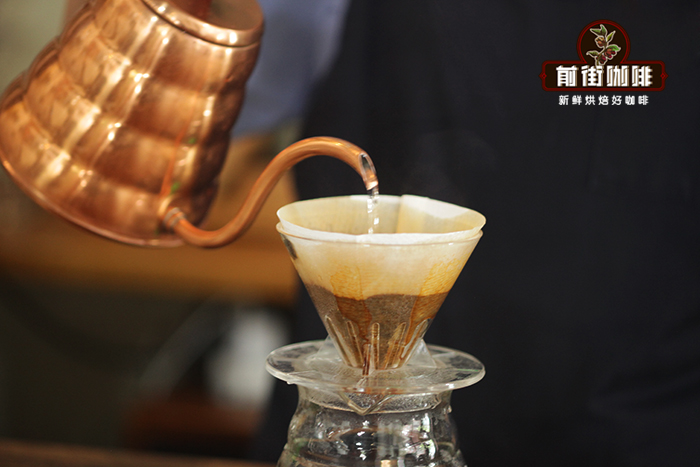
Comparison of the results:
Fine grinding
Concentration: 1.32%
Extraction rate: 19.53%
Medium grinding
Concentration: 1.17%
Extraction rate: 17.28%
Rougher grinding
Concentration: 0.84%
Extraction rate 12.37%
What will happen if the coffee is ground too fine?
From the point of view of the appearance of the particles, the particle size is smaller, and because the particles are smaller, the distance between the particles is shorter, and the water flow is more difficult to pass through it, so the dripping time is longer in the cooking process.
The fine grinding degree leads to smaller particles, and the coffee powder is mushy after being filtered with water. After brewing, it is difficult to see all the coffee particles, and most of them are obviously muddy.
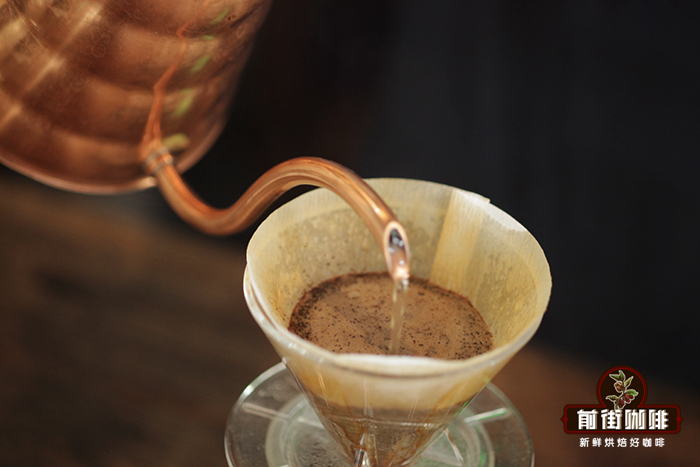
The fine grinding degree leads to the smaller coffee powder particles, the increase of the surface area of coffee particles and the increase of the place where the water can extract coffee substances, so the concentration and extraction rate are increased, the coffee is full-bodied, bitter and astringent, and the rest of the flavor is covered.
What is the performance of coffee grinding if it is too rough?
From the appearance of the particles, the size of the particles is larger, and because the particles are larger, the distance between the particles is larger, and the water flow is easier to pass through the coffee powder, so the filtration time is shorter in the brewing process.
The coarse grinding degree leads to obvious coffee particles in the brewed powder bed, and it is difficult to form a complete powder bed, and there are faults.
The coarse grinding degree leads to the larger coffee powder particles, the reduction of the surface area of coffee particles and the decrease of the place where the water can extract coffee substances, so the concentration and extraction rate are also reduced. The coffee is tasteless and tasteless, with a light taste and almost no flavor.
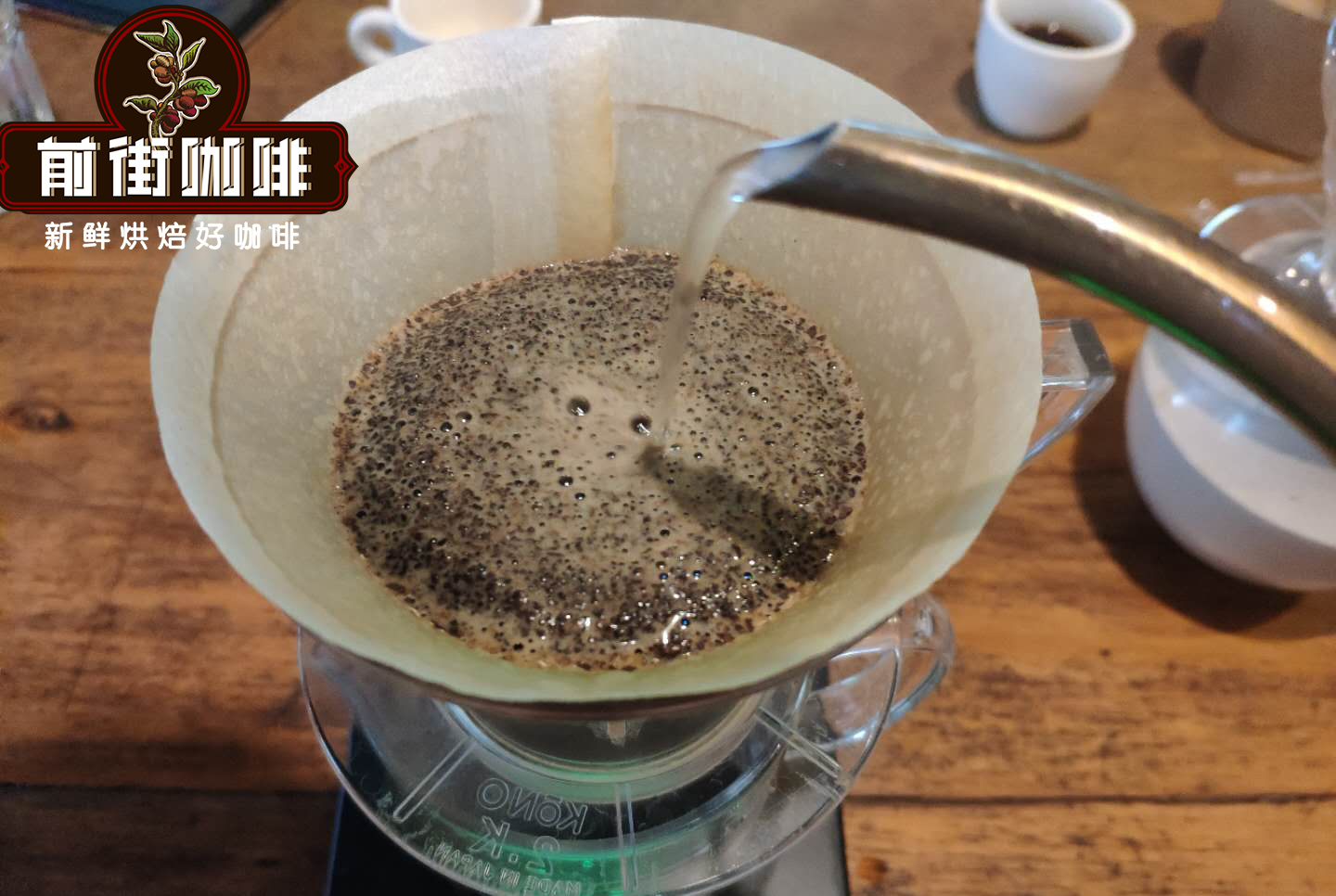
How to determine the correct hand grinding degree?
Therefore, grinding is one of the most important links for coffee extraction, and a suitable grinding thickness is crucial for making a good cup of coffee. But how much thickness is appropriate? Qianjie coffee is recommended on the basis of 0.85mm sieve (that is, national standard 20). The grinding degree with an over-sieving rate of 80% of the ground coffee powder is recommended as the grinding degree of hand-brewed coffee.
Of course, the degree of grinding used is also different for coffee beans with different roasting degrees, for example, the grindness of light roasted coffee brewed in front of the street is 85% of the pass rate of 0.85mm caliber sieve. Medium roasting coffee will be ground with a pass rate of 75% with a 0.85mm caliber screen. On the other hand, deep-roasted coffee will be ground with a pass rate of 67% with 0.85mm caliber screen. These data are for your reference only.
For more boutique coffee beans, please add private Qianjie coffee on Wechat. WeChat account: kaixinguoguo0925
Important Notice :
前街咖啡 FrontStreet Coffee has moved to new addredd:
FrontStreet Coffee Address: 315,Donghua East Road,GuangZhou
Tel:020 38364473
- Prev
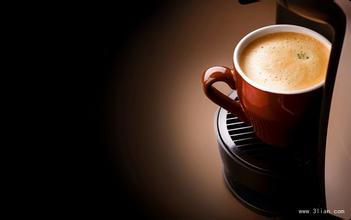
The method of adding Delong Coffee Powder-the method of making Coffee with Coffee Powder
Delong coffee powder adding method-coffee powder method of brewing coffee powder simple judgment of coffee powder grinding thickness if the outflow of coffee liquid is very light, pressed powder is not shaped loose and damp, the powder is too thick if the coffee liquid is very black, in the shape of a drop, not in a straight line, and very little liquid flows out for a long time, the powder is too fine. Normally, at first, the coffee liquid is very strong, the liquid is in a straight line, slow.
- Next

The Development of American Coffee Culture an introduction to the Origin of Cafe
The development of coffee culture in the United States when the origin of cafes was introduced, San Francisco looked like a replica of Europe because there were too many cafes. San Francisco people's love of coffee is almost crazy, they tend to use coffee spoons to measure life. There are at least 40 ways to order coffee, and about 250 coffee recipes are worth trying. People in San Francisco are used to putting coffee
Related
- What brand of black coffee is the most authentic and delicious? what are the characteristics of the flavor of the authentic Rose Summer Black Coffee?
- Introduction to the principle and characteristics of the correct use of mocha pot A detailed course of mocha pot brewing coffee is described in five steps.
- Which is better, decaf or regular coffee? how is decaf made?
- How much is a bag of four cat coffee?
- How about four Cat Coffee or Nestle Coffee? why is it a cheap scam?
- Which is better, Yunnan four Cats Coffee or Nestle Coffee? How about cat coffee? is it a fake scam? why is it so cheap?
- How about Cat Coffee? what grade is a hoax? which instant coffee tastes better, four Cat Coffee, Nestle Coffee or G7 coffee?
- Process flow chart of coffee making-Starbucks coffee making process what coffee tastes good at Starbucks
- The top ten best coffee beans in the world Rose summer coffee or Tanzanian coffee tastes good
- Yunnan four cat coffee is good to drink?_four cat coffee is a big brand? four cat blue mountain coffee is fake?

